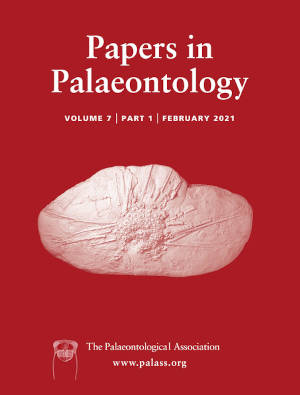Reg. Charity No. 1168330

Chancelloriids are a poorly understood group of phylogenetically problematic Cambrian metazoans; complete specimens show they were sessile, radially symmetrical, club‐shaped organisms covered with sclerites in the form of rosettes of spines. While isolated sclerites are common components of Cambrian shelly assemblages, they have been relatively little studied. We describe chancelloriid sclerites from a series of nine sections spanning the upper Dyeran to lower Delamaran stages (latest Stage 4 to perhaps basal Wuliuan) from the Pioche–Caliente region of east‐central Nevada, USA. Acid maceration of samples from the Combined Metals, Comet Shale and Susan Duster Limestone members of the Pioche Formation yielded more than 2000 sclerites. Based on careful examination of these sclerites and statistical analyses of co‐occurring sclerite types, we distinguish six species, each with a restricted stratigraphic range. Chancelloria impar Moore sp. nov. is the dominant species in most upper Dyeran samples. Archiasterella cometensis Moore sp. nov. and A. auriculata Moore sp. nov. are rare in the upper Dyeran but abundant in the lowest Delamaran; A. uncinata Moore sp. nov. and C. lilioides Moore sp. nov. replace these in younger samples. A. auriculata is noteworthy for sharing features with species of both Archiasterella and Chancelloria. These results provide further support for the taxonomic tractability and biostratigraphical utility of chancelloriid sclerites; large collections from single horizons allow intraspecific variability to be assessed and species to be distinguished. Our results document a taxonomic turnover in chancelloriids at the Dyeran–Delamaran boundary, showing that not only trilobites were affected at this time.